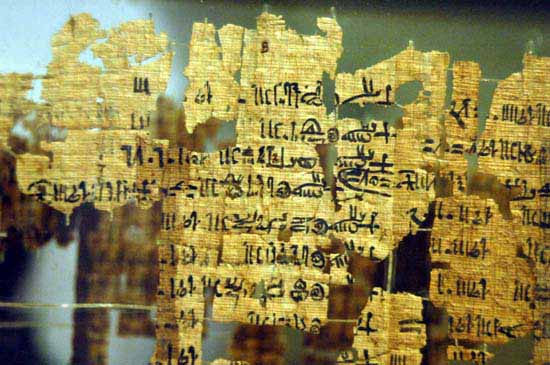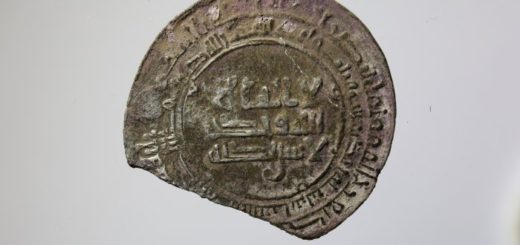Three Ancient Egyptian discoveries that challenge mainstream history

Ancient Egypt, the land of the Pharaohs, the land where anything is possible and where magic is in fact reality. Ancient Egypt is filled with incredible discoveries that show us the incredible truth behind our history.
Even though we have countless incredible findings from ancient Egypt, today we are going to mention three of them which definitely challenge history as we know it. Not only do these three discoveries challenge mainstream history, experts around the world have still not managed to explain them and thus remain as some of the biggest enigmas of the 21st century in regards of Ancient Egypt and everything we have been taught in school.
It is an ancient construction that has baffled researchers ever since its discovery and until today, no one has been able to accurately date the Sphinx, since there are no written records or mentions in the past about it. Now, two Ukrainian researchers have proposed a new provocative theory where the two scientists propose that the Great Sphinx of Egypt is around 800,000 years old. A Revolutionary theory that is backed up by science.
According to a study presented at the International Conference of Geoarchaeology and Archaeomineralogy held in Sofia titled: GEOLOGICAL ASPECT OF THE PROBLEM OF DATING THE GREAT EGYPTIAN SPHINX CONSTRUCTION, the great Sphinx of Egypt is 800000 years old and will most definitely help rewrite history as we know it.
Manichev and Parkhomenko propose a new natural mechanism that may explain the undulations and mysterious features of the Sphinx. This mechanism is the impact of waves on the rocks of the coast. Basically, this could produce, in a period of thousands of years the formation of one or more layers of ripples, a fact that is clearly visible, for example, on the shores of the Black Sea. This process, which acts horizontally (that is, when the waves hit the rock up to the surface), will produce a wear or dissolution of the rock.
The fact is that the observation of these cavities in the Great Sphinx made the Ukranian scientists think that this great monument could have been affected by above said process in the context of immersion in large bodies of water, not the regular flooding of the Nile.
When we talk about the Great Pyramid of Giza there are two things that no one is able to explain. The Exact age of the Great Pyramid of Giza and how it was built… a third question could be the purpose of the pyramid. Since we know that it wasn’t a tomb… why did the ‘builders’ of the great pyramid erect such majestic structure? What we have been told about Ancient Egypt and the Great Pyramid in school is very different from the reality. The truth is, there are dozens of incredible features about the Great Pyramid that most of us had no idea about until now. Here we present details about the Great Pyramid of Egypt that will surely change the way you look at this incredible ancient construction. According to analysis, it is believed that the Great Pyramid of Giza has around 2,300,000 stone blocks that weigh from 2 to 30 tons each and there are even some blocks that weigh over 50 tons.
The questions that still remains is how ancient man was able to quarry, transport and mount these incredible rocks to form the Great Pyramid of Giza. Interestingly, the outer mantle was composed of 144,000 casing stones, all of them highly polished and flat to an accuracy of 1/100th of an inch, about 100 inches thick and weighing approx. 15 tons each. As if this isn’t incredible enough, the cornerstone foundations of the pyramid have ball and socket construction capable of dealing with heat expansion and earthquakes. This technology has allowed the Great Pyramid of Giza to remain standing thousands of years after its construction. Something that still causes headaches among experts is the mortar used in the construction of the Great Pyramid: The mortar used is of an unknown origin (Yes, no explanation given). It has been analyzed and its chemical composition is known but it can’t be reproduced. It is stronger than the stone and still holding up today.
The Pyramid of the Giza plateau and their age: The pyramids are much older. A Ostrich egg deposited in the Museum of Nubia, south of Egypt suggests ancient Egypt is older than we are told by history and archaeology. The discovery was made by English archaeologist, Mallaby Cecil Firth in 1907. The egg, painted and deposited in the tomb, had several different drawings on its surface, on one side it had depictions of plants and ostriches while on the other side, an impossible scenery: The Great Pyramids of Giza.
This discovery is incredible just because of the depiction of the pyramids. Why? Because according to researchers, the human remains found at tomb 96 where the Ostrich egg was found date back to the Nagada I culture; 7000 years ago. This is something impossible since Archaeology and history tell us that the pyramids at the Giza plateau are around 4.500 years old.
The Turin Papyrus also known as the Canon of Turin is another important ancient text. Even though it isn’t preserved completely it is an ancient text written in hieratic language. It is believed that the original list had over 300 names, detailing precisely the years, months and days of each reign of the kings that ruled over the lands of ancient Egypt. The papyrus is the most extensive list of kings available, compiled by the Egyptians, and is the basis for most chronology before the reign of Ramesses II. From the remaining pieces of this invaluable list, it is possible to establish nine dynasties belonging to the predynastic Pharaohs, among them are: the Venerables of Memphis’, ‘the Venerables of the North’ and, lastly, the Shemsu Hor (the Companions, or Followers, of Horus) who ruled until the time of Menes.
The final two lines of the column, which seem to represent a resume of the entire document are extremely interesting and remind us to the Sumerian King list. They read: ‘… Venerables Shemsu-Hor, 13,420 years; Reigns before the Shemsu-Hor, 23,200 years; Total 36,620 years’.
According to Eusebius of Caesarea, who was a Roman historian, exegete, and Christian polemicist of Greek descent, a dynasty of gods ruled Egypt for 13.9 thousand years: the first was god Vulcan, the god who discovered fire, after him Sosis of the Sun, Isis and Osiris of Saturn, Typhoon brother of Osiris, and Horus the son of Isis and Osiris. They were followed by a dynasty of heroes and demigods who ruled for 11,025 years. This makes it a total of 24.925 years of reign. Approximately around 3000 BC, the first “human” pharaoh would take rule as Egyptian pharaoh.
Image Credit: Wikimedia Commons. Featured image: WideWallpapers



 Creators of mankind
Creators of mankind Description of “Tall white aliens”
Description of “Tall white aliens” Where they came from?
Where they came from? About hostile civilizations
About hostile civilizations The war for the Earth
The war for the Earth “Tall white aliens” about eternal life
“Tall white aliens” about eternal life Video: “Nordic aliens”
Video: “Nordic aliens” Aliens
Aliens Alien encounters
Alien encounters The aliens base
The aliens base UFO
UFO Technology UFO
Technology UFO Underground civilization
Underground civilization Ancient alien artifacts
Ancient alien artifacts Military and UFO
Military and UFO Mysteries and hypotheses
Mysteries and hypotheses Scientific facts
Scientific facts


















